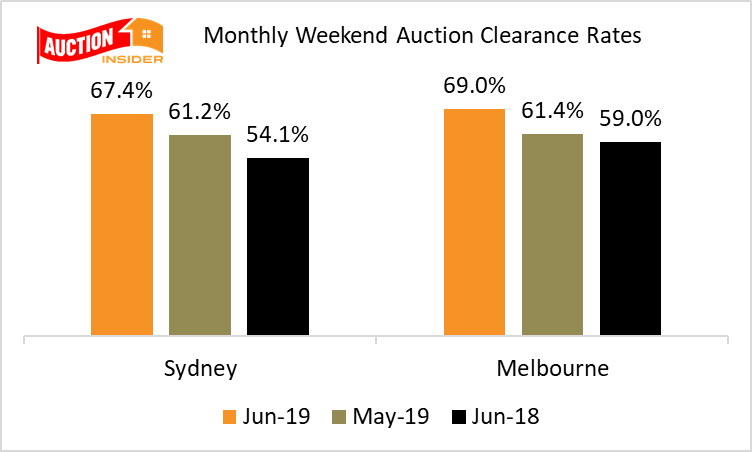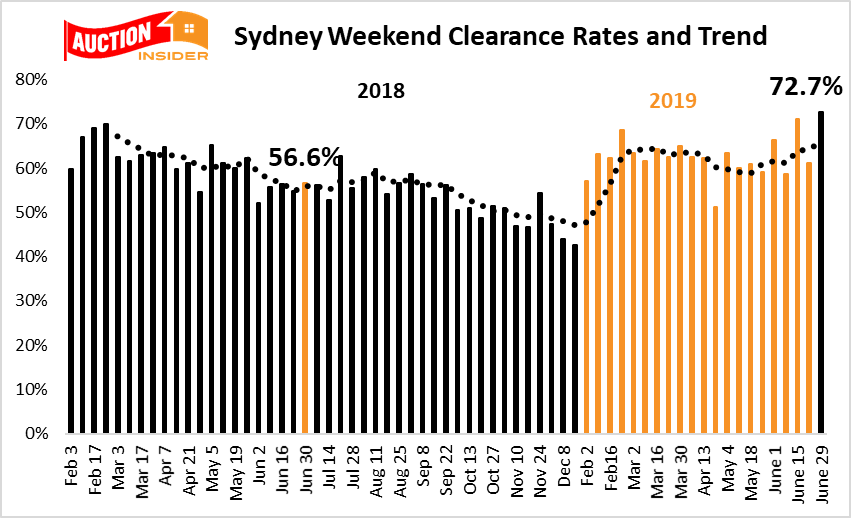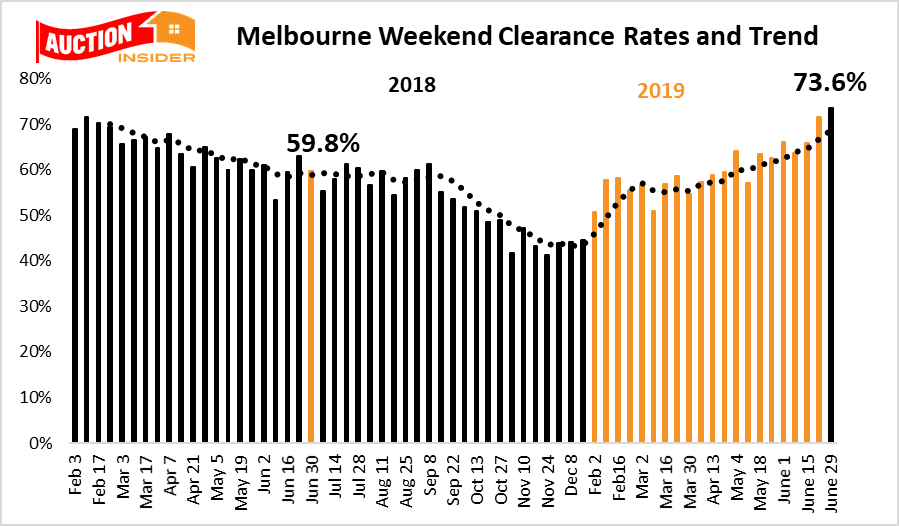There is change in the air and our property markets are showing some promising signs.
The biggest question buyers and sellers in Sydney and Melbourne are asking is: “Are we there yet?”
In other words, they're wondering have our property markets hit the market floor and is it time to get back in again?
We've also received the much anticipated second interest rate cut, which by the way isn't good news.
In this month’s Property Insiders market update Dr. Andrew Wilson and I bring you up to date on what’s happening around our property markets.
Watch as we discuss:
This month's interest rate announcement.
The interest rate cut was no real surprise.
The likelihood of an interest rate cut had been rising throughout June, particularly since the weak GDP figures in early June and following RBA Governor Phil Lowe’s speech which indicated that a single 25 basis point cut to rates (which was delivered in June) was unlikely to shift the path that we are on.
They are clearly targeting unemployment. They want to move the unemployment rate down into the low 4’s to soak up the spare capacity in the employment market with the aim of impacting wages growth.
They’re keen to stimulate wages growth, to boost general economic growth.
Before we look at the property markets let’s look at the economy...
Globally
• The major story this moth has been the trade tensions between the US and China. If they persist they could impacting global GDP but we did see some positive moves recently with a downgrading of the tensions.
The Domestic economy -
• It’s old news now but over the month we saw the March quarter GDP figure — growth for the March quarter of 0.4%, which meant that the annual pace of growth in the economy has dropped from 2.4% down to 1.8%. That’s the slowest rate of growth in our economy since 2009. So you can see the reason why the Reserve Bank is trying to get stimulus back into the economy.
• We saw unemployment rate in May; steady at 5.2%.
o There were 42,300 jobs created — the strongest monthly jobs growth in the past 12 months.
o The participation rate rose to 66%, which is the highest it’s ever been in terms of people looking to get employment.
o It’s this introduction of more people looking for work that still keeps the spare capacity in the employment marketplace that the RBA wants to have absorbed.
o Digging deeper into the employment numbers - 39,800 new part-time jobs were created, whereas only 2,400 jobs full-time. But remember these figures reflect the month where we had the federal election – so we should watch this space now that confidence is returning.
• Credit growth was also weak in the figures reported for May just a 0.2% increase, bringing the overall increase for the year at 3.6%. This is a very weak number —the weakest has been for over six years.
Wilson Asking Price Index
There are mixed signs this month with asking prices improving in Sydney - but falling elsewhere

The latest auction trends
Auction clearance rates are improving month by month in our two big capital cities.
One signs of improving market confidence is the much higher Melbourne and Sydney auction clearance compared to a year - albeit on much lower volumes.
These increasing clearance rates began at the beginning of the year and have clearly improved in the last few months on the back of increasing post-election confidence and the anticipation of lower rates and easier lending.
But as always our markets are fragmented with different regions performing differently.



Predictable Market Recovery Condemns Doomsayer Forecasts to the Trash
Dr Andrew Wilson comments:
Positive signs continue to emerge of a recovery in the Sydney and Melbourne housing markets offsetting the crisis in confidence that has gripped buyers and sellers since late last year.
The market fear factor was fuelled by widespread loopy predictions of catastrophic house price falls to be recorded this year and now increasingly revealed as ignorant, silly media fodder.
Weekend auction clearance rates in both Melbourne and Sydney continue to rise and are now consistently tracking around 70% - the highest levels for nearly two years.
Lower mortgage rates, income tax cuts and rising wages will fuel market confidence and consolidate recovery with prices growth to follow.
Hopefully consumers – and policymakers - will be a little wiser when confronted again by the nonsensical sucker-bait of the house price crash troglodytes.
Factors changing the market momentum…
• Increased confidence now that the Coalition has won the Federal Election
• APRA easing bank's assessment criteria for new loans - this should commence in the next month
• Two interest rate cuts
• Banks passing on the home loans with some cutting rates even before the most recent RBA "official" cut in rates
• The best housing affordability nationally since 2016.
• Positive messages in the media stoking consumer confidence
• First home buyers returning to the market encouraged by government incentives.
What's ahead?
Nationally our property markets are likely to bottom out in the next few months and property values are likely to be a little higher at the end of the year than they are today.
While servicing a mortgage may become a little easier, the introduction of the Banking Code of Conduct and the expansion of Comprehensive Credit Reporting from the beginning of July means the scrutiny on loan applications will remain significantly greater than it has been in the past.
Given this, don't expect a significant bounce in property values - the recovery in housing market conditions is likely to be slow and gradual.
With thanks to PropertyUpdate.com.au and MyHousingMarket.com.au